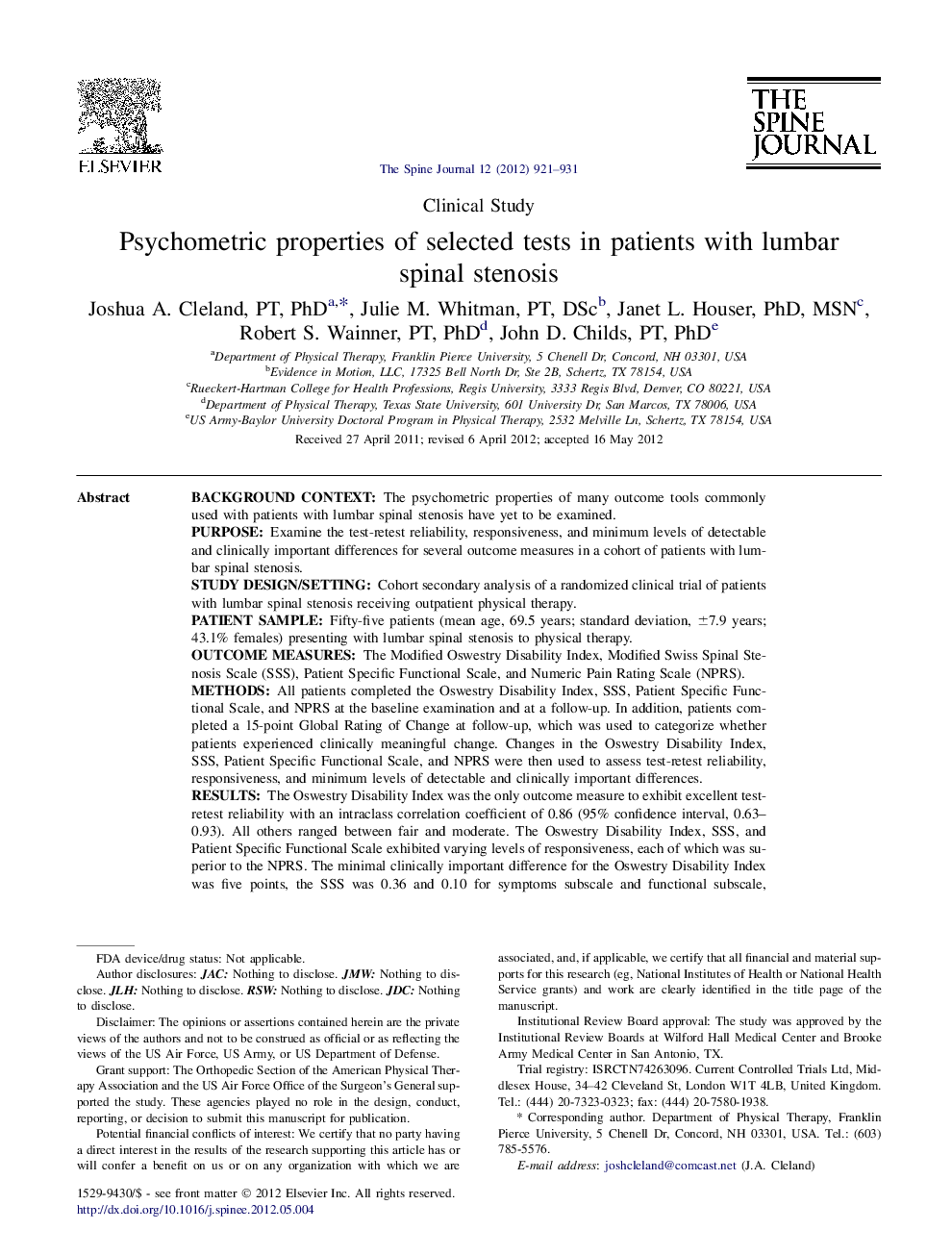| Article ID | Journal | Published Year | Pages | File Type |
|---|---|---|---|---|
| 4097420 | The Spine Journal | 2012 | 11 Pages |
Background contextThe psychometric properties of many outcome tools commonly used with patients with lumbar spinal stenosis have yet to be examined.PurposeExamine the test-retest reliability, responsiveness, and minimum levels of detectable and clinically important differences for several outcome measures in a cohort of patients with lumbar spinal stenosis.Study design/settingCohort secondary analysis of a randomized clinical trial of patients with lumbar spinal stenosis receiving outpatient physical therapy.Patient sampleFifty-five patients (mean age, 69.5 years; standard deviation, ±7.9 years; 43.1% females) presenting with lumbar spinal stenosis to physical therapy.Outcome measuresThe Modified Oswestry Disability Index, Modified Swiss Spinal Stenosis Scale (SSS), Patient Specific Functional Scale, and Numeric Pain Rating Scale (NPRS).MethodsAll patients completed the Oswestry Disability Index, SSS, Patient Specific Functional Scale, and NPRS at the baseline examination and at a follow-up. In addition, patients completed a 15-point Global Rating of Change at follow-up, which was used to categorize whether patients experienced clinically meaningful change. Changes in the Oswestry Disability Index, SSS, Patient Specific Functional Scale, and NPRS were then used to assess test-retest reliability, responsiveness, and minimum levels of detectable and clinically important differences.ResultsThe Oswestry Disability Index was the only outcome measure to exhibit excellent test-retest reliability with an intraclass correlation coefficient of 0.86 (95% confidence interval, 0.63–0.93). All others ranged between fair and moderate. The Oswestry Disability Index, SSS, and Patient Specific Functional Scale exhibited varying levels of responsiveness, each of which was superior to the NPRS. The minimal clinically important difference for the Oswestry Disability Index was five points, the SSS was 0.36 and 0.10 for symptoms subscale and functional subscale, respectively, 1.3 for the Patient Specific Functional Scale, and for the NPRS, 1.25 for back/buttock symptoms and 1.5 for thigh/leg symptoms.ConclusionsThe results of our study indicate that the Oswestry Disability Index, SSS, and Patient Specific Functional Scale possess adequate psychometric properties to be used in the outcome assessment of patients with lumbar spinal stenosis. However, further investigation is needed to validate these findings in other samples of patients with lumbar spinal stenosis and nonspecific low back pain.
